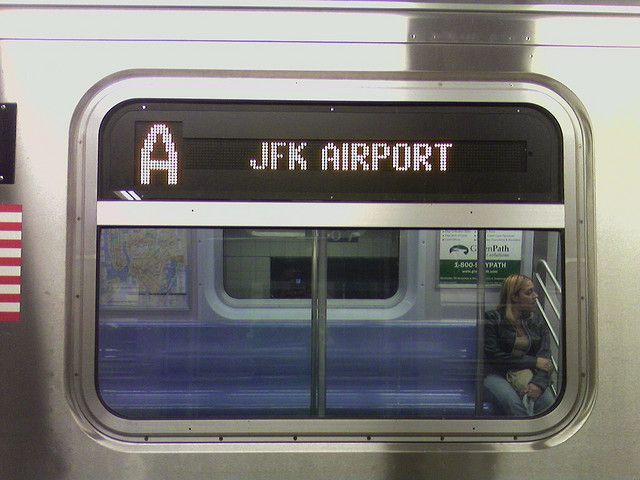How do you get people to the airport? For the majority of Americans it’s by car, but as the country’s airports and metropolitan regions grow, alternatives are increasingly needed.
There are more airport-to-city rail links either being built or in the advanced stages of planning in the US today than ever before. Providence opened its new Interlink, which connects TF Green International Airport to a new commuter rail and bus station, on October 27 and new connections are currently under construction in Dallas, Denver, Miami, Oakland and Salt Lake City. Charlotte, Chicago, Ft. Worth, Houston, Los Angeles and Washington are in various stages of planning their own rail links.
These links are much needed. The existing lack of transportation alternatives to airports encourages both passengers and employees to drive, creating additional traffic and pollution. Not to mention the impression our airport connections leave on foreign travelers – a read through any number of Tyler Brule’s column in the Financial Times is a quick lesson in how much of a joke our airports (and their city connections) are to the world.
But planning a successful airport transit link is difficult. In a recent report, the Transportation Research Board’s Airport Cooperative Research Program (ACRP) spent 96 pages outlining the basics for implementing such a service. Steps included determining the connection’s target market – either residents or non-residents and where they travel to and from – where terminals should be located (typically within 10 to 15 miles of the airport) and making the link easily accessible to the existing regional transportation network. The report highlighted transit centers and park and ride lots as good locations.
When done right these systems can be a boon to both airports and the regions they serve. One of the most commonly cited rail connections in the US is the Metrorail station at Ronald Reagan Washington National Airport. The stop connects the airport to both downtown Washington as well as the much of the region, which makes it a popular choice for locals and visitors alike. The link carries roughly a quarter of airport passengers.
Express buses, though not as sexy as rail links, are a much more common transit option. The ACRP report highlighted Los Angeles World Airport’s (LAWA) FlyAway buses, which operate four routes between Los Angeles International Airport (LAX) and Irvine, Union Station, Van Nuys and Westwood. Originally launched to provide San Fernando Valley residents an alternative to the congested I-405 freeway in 1975, three new routes have been added since 2005 under a compromise with local community groups to mitigate vehicle traffic in exchange in exchange for support of the airport’s expansion plans. The agency plans to launch five more FlyAway routes by 2015.
When planning a route, a LAWA spokesperson said, they look at demand based on a market analysis, the ability of the service to reduce emissions and congestion, its financial feasibility and the distance from the offsite terminal to the airport. They added that they prefer sites located near freeways because they reduce both travel time and congestion on local streets.
During the first nine months of the year, the FlyAway carried 999,839 passengers. Gary Hoggatt, contract manager for the express bus service at LAWA, estimates that roughly 952,105 of those were enplaning passengers – about 2% of the airport’s total passenger traffic.
While Washington and Los Angeles are good examples of airport-transit links, the majority of travelers at those airports still arrive by car. Even the best laid plans are little match for Americans preference to drive but, as more airports offer connections and open highly visible rail links, one hopes that more and more people will opt to leave their cars at home.






_920_518_600_350_80_s_c1.jpg)
_600_350_80_s_c1.jpg)








